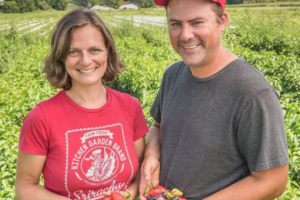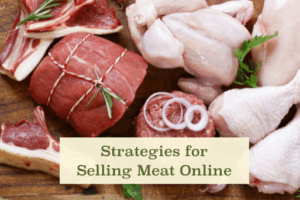You might be wondering – what is a Facebook Pixel? It is simply a piece of code that you put in the header of your website. It helps Facebook serve up Facebook or Instagram ads to people that have visited your website.
If you have a Facebook or Instagram account, you have probably seen this in action. You browse a website looking for something and the next time you are on Instagram, you see an ad from that company – perhaps even the very item you were looking at on their website.
Some ways pixels could benefit farms and food hubs:
– Increase CSA subscription rates. Perhaps someone came to your website to learn more about your CSA but didn’t quite sign up. If they see an ad to sign up for our CSA the next time they are checking their Instagram feed, it may be just the reminder they need to finish the process!
– Encourage consumers to buy your products. Whether customers can buy your products at your farm, a local grocery store, through your website, or the farmers market, seeing an image of a juicy peach, crisp apple, or a seasoned steak will help you build their loyalty and increase your sales over time.
– Remind chefs about your products and service. We hear all the time that chefs can be difficult to get in touch with. Many have active Instagram accounts to share beautiful pictures of the dishes they’ve created or promote events at their restaurant. If they’ve visited your website, a reminder while scrolling their feed about your service with a beautiful picture of some of the products you offer is the perfect reminder to place their first order. It can also be a great way to re-engage chefs that order infrequently.
– Increase your following on your Instagram or Facebook feed. Even regular customers may not be following your accounts and seeing your ad can prompt them to follow you. Increasing your following only helps you reach more customers in the future without paid advertising.
Steps to get started:
Create the pixel. Installing the pixel is free and is your very first step. You will need to create your pixel from the Business Manager section of your Facebook page. Adding a pixel to your website well before you create an ad will help you target your website visitors more effectively.
Install the pixel on your website. Once you create the pixel, you will need to the paste the html code into the header of your website. If you aren’t sure how to edit your website, we recommend contacting your website designer. Most of the major website content management systems offer step by step instructions on how to add the pixel via their help system or video tutorial.
Create an ad. If you aren’t familiar with creating ads for social media, you might consider working with a digital marketing company to help you create a professional ad and setup the targeting using your pixel data. It is certainly possible to muddle through the process yourself, but most farmers we know don’t have a lot of time on their hands to figure out the intricacies of social media ads. Pro tip: Digital marketing is a specialized field that is rapidly changing. Not all marketing companies have expertise in digital marketing, so be sure to ask questions before you enter a formal engagement.
Evaluate. Facebook’s Ad Manager will track ad clicks for your various ads. If you are directing customers to your website from an ad, you will see that information in your Traffic reports in Google Analytics.
Are you using a pixel and/or social media ads for your business? We’d love to hear about it! Contact us and tell us your story!
Register for a Demo Today!



